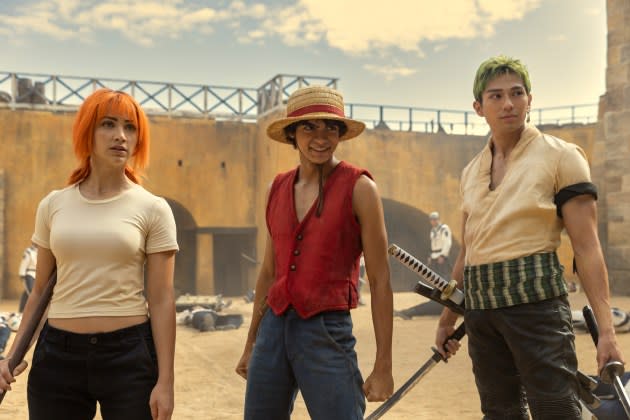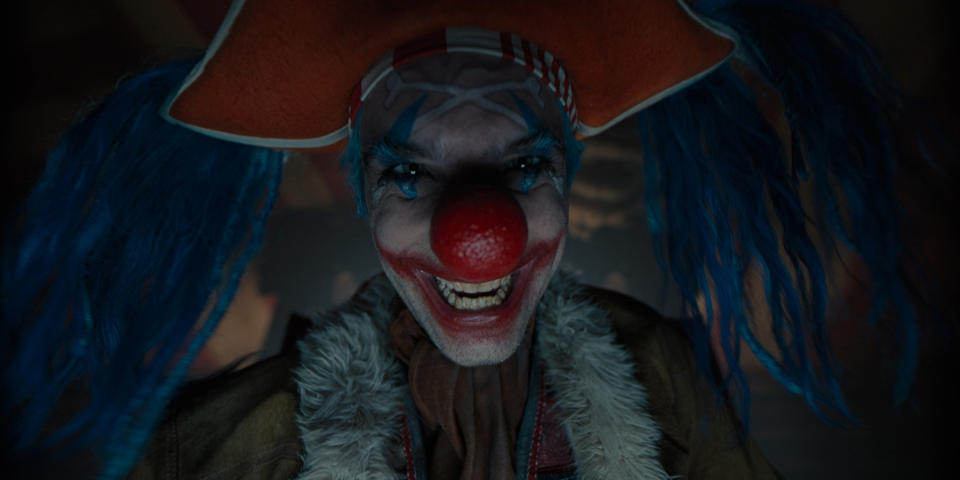Netflix’s ‘One Piece’ Is More Bloated Than Any Anime

Two years ago, Netflix debuted Cowboy Bebop, a live-action adaptation of the beloved Japanese anime about spacefaring bounty hunters in the 22nd century. I found this new version lively and thrilling, but I admittedly had never seen the original. For the most part, it seemed, the most interested audience for it were fans of the anime, and they did not like any of the changes made. Unsurprisingly, Netflix did not order a second season.
Now comes the streaming giant’s second attempt at the same idea with One Piece, a live-action take of the long, long, long-running manga and anime series about Monkey D. Luffy, an unrelenting optimist convinced he is destined to become “King of the Pirates,” even though he’s not entirely sure what such a title would entail. The producers of this new version have even said that they learned lessons from the failure of Cowboy Bebop, specifically that they should attempt fidelity to the work of One Piece creator Eiichiro Oda whenever possible.
More from Rolling Stone
Adam Driver Calls Out Netflix and Amazon, Stands With Strikers in Venice
How Can You Live to 100? Netflix Explores the Secrets to Aging
I’ve long believed that different forms of media have different demands, that material that works well in one does not automatically translate to another, and that adaptations that slavishly follow the source material can feel — even to novice viewers — like wax museum replicas rather than vital stories in their own right. So sentiments like the one from the above Variety article tend to set off alarm bells for me, even though I was, once again, coming into this property with no advance knowledge, other than seeing images of Luffy and friends dominating the manga section of every bookstore and library I’ve visited for years.

But here’s the funny thing: I watched all eight episodes of the Netflix show’s first season, and had a more mixed reaction to it than I did to Cowboy Bebop, greatly enjoying some parts while quickly growing impatient with others. So out of curiosity, I went back to watch the first four episodes of the anime. It is a comically small sample size from a show that has made over 1000 episodes so far, but they cover a lot of the same narrative as the first few live-action episodes. And after finishing those, I surprisingly came to two conclusions:
1. This new One Piece is in most ways incredibly faithful to the early stages of the anime (if not to the manga, which I haven’t read); and
2. The parts I liked the least were the ones that deviated the most from the anime.
I know, I know. “Adaptations should feel free to do their own thing!” is one of my more frequent holy wars. (For a more expanded version, see my review of Netflix’s take on The Sandman.) But shows don’t usually last for 1000-plus episodes unless their creative teams know what they’re doing. So perhaps I shouldn’t be shocked that there’s a lot of good stuff for live-action showrunners Matt Owens and Steven Maeda to import directly from Oda’s work.
Let’s start there. As explained in brief opening narration by the great Ian McShane, “This is a world of pirates!” Luffy (played by Iñaki Godoy) has long dreamed of becoming one, just like his idol and mentor Shanks (Peter Gadiot), but seems hopelessly unqualified. When we meet him, all he has to his name is a tiny rowboat, and it begins to sink while he’s out on the high seas. Worse, this would-be pirate king can’t even swim. Despite this, Luffy is so irrepressible, so enthusiastic, and so empathetic about the problems and dreams of the people he meets, that he gradually acquires a crew — notably master swordsman Roronoa Zoro (Mackenyu) and expert thief Nami (Emily Rudd) — a ship, a map that may lead to the legendary treasure that gives One Piece its title, and more.
Oh, and did I mention that his body is basically made of rubber?
Yes, in addition to being a world of pirates, it’s a world of superpowers. So Luffy can bend and stretch and deflect bullets. Buggy (Jeff Ward), a clown-themed pirate the crew encounters in the season’s middle episodes, has supernatural abilities of his own, and the climax of the season involves Luffy and friends going up against an army of superstrong fishmen, led by the vicious Arlong (McKinley Belcher III). There are also giant sea monsters, snails that function as telephones, and other similarly bizarre flourishes that likely never would have been dreamed up if this started as a live-action story, but that work well enough once adapted.
All of this is fun and energetic, and the action is extremely well choreographed, shot, and edited. We have to believe that Zoro is one of the world’s great sword wielders(*), that Luffy’s Mr. Fantastic abilities would allow him to go toe-to-toe with someone like Arlong, and that other crew members (including later arrivals Usopp and Sanji, played, respectively, by Jacob Romero and Taz Skylar) are capable fighters in their own right. And the clean and clear way that the fight scenes are presented accomplishes that.
(*) Mackenyu has DNA on his side, as his father was legendary martial arts movie star Sonny Chiba.
It’s also an amusingly quirky show, with an arch tone that acknowledges how weird so much of this is, and how ridiculous Luffy must seem to people who don’t know him. The energy of the world-building and the chemistry between the characters is enough to carry things in the early going. But once the novelty fades, some of the problems begin to assert themselves.
The first is that One Piece episodes have no business being as long as they are. The debut is 64 minutes, and the others aren’t substantially briefer. In some cases, they’re combining the plots of two consecutive anime episodes, but the individual installments feel bloated nonetheless.
But the bigger problem, related to that, is that Owens, Maeda, and company use a lot of this bonus time to dig deeper into these characters and this world than seems justifiable based on the results in this season. Everyone gets a tragic backstory, Luffy especially, as we dwell a lot on him as a kid (played by Colton Osorio) while he seeks Shanks’ approval. The goal, it seems, is to make us care about the crew in the same way that Luffy instantly cares about them. But this grab for emotional resonance feels at odds with the rest of the material, and in particular the characterization of the young adult Luffy. It’s not fair to complain that Godoy’s performance feels thin at best, since he’s basically asked to only play two notes: cheerfully delusional self-aggrandizement, and, on occasion, righteous indignation on behalf of his friends. And he plays both of those well! But Luffy is such a fundamentally broad and silly character in this telling that all these attempts at nuance and poignancy seem utterly at odds with the material, and with the nature of the main character. The deeper we get into the season, and the more we learn about each member of the crew, the more One Piece drags.
Again, I have seen only the tiniest fraction of the anime, and read none of the manga. For all I know, the other versions eventually get more dramatic, too. If so, I assume they do it better, and find ways to avoid the tonal whiplash that appears early and often here. The good parts of this version are, like the earliest anime episodes, deliberately light and unapologetically silly. And every time it leans toward profundity, it instead feels weighed down and working against its own interests.
There are also individual moments and images that are clearly, even to my untrained eyes, meant to evoke their two-dimensional inspiration. Maybe, ultimately, that’s all that the audience needs, in the same way that Disney’s extremely literal live-action or CGI remakes of their hand-drawn Nineties classics have earned so much money. Creatively, though, One Piece needed to work harder in identifying exactly why the earlier versions have worked, which elements could most easily be imported into live-action, and what changes would be most seamless. It doesn’t need to be quite as malleable as Luffy, but the finished product is a bit too stiff.
The first season of One Piece is streaming now on Netflix. I’ve seen all eight episodes.
Best of Rolling Stone

 Yahoo News
Yahoo News 
